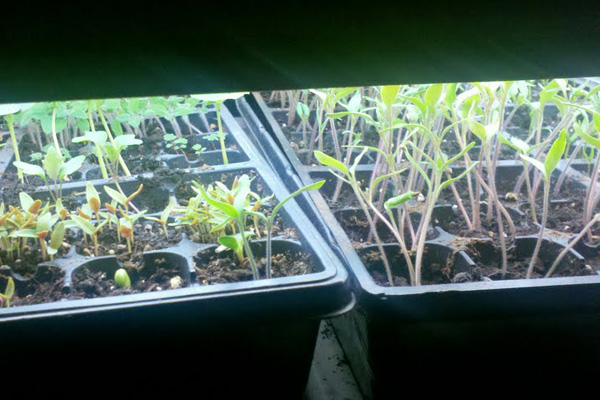-

Erin Donahue -

Christina Barkanic -

Brittany Trott -

Emily Wiley -

Jessica Reilley -

Chris Raines -

Will Nichols -

Emily Reddy -

Michele Marchetti -

Michele Frank -

James Gherardi -

Kit Henshaw -

Christina and Erin -

Kim Tait -

Erin McKinney -

Steve Spanelli -

Sam Komlenic -

Katherine Taylor Grofic -

James Eisenstein -

Jamie Oberdick -

Anna Lombardo -

LacCreta Holland -

Tony Ricci -

Local Food Journey -

Laura Young -

Kristin Camplese -

Harrison's Fresh + Local -

Danielle Matalonis -

Kristine A. -

Linda Weaver -

Naomi Elle Schwartz -

Dana Stuchul -

Cara McShane -

Brittany Smith -

Jessica Illuzzi - Frosty
-

Jessica Paholsky -

James Sechrengost -

Brad Yeckley -

Maya Althouse -

Jordan Reabold -

Kim Chase -

Maria Bryant - Alexandrea Scott
Five tips to get you ready for seed starting season
Posted by Jamie Oberdick on 03/16, 2017 at 08:44 AM

While winter is back after going on an extended vacation, it’s time to start thinking about gardening because before long, all this snow will be just a memory. If you are a serious gardener, chances are very good you grow a lot of things from seed. Many vegetable plants need their seeds started indoors so they reach maturity before our first frost of the fall.
If you are new to growing plants from seed, it may seem a little intimidating, but it’s really not that difficult. A successful seed starting operation does need a little advance planning. Here’s five tips to help you get started sowing a successful garden:
- Check on stratification: Some seeds require stratification, which is exposure to a period of cold or freezing temperatures in order to break up the seeds outer protective coating so it can germinate. This can be done in the refrigerator or freezer. You can find out what seeds need stratification either on the seed pack or online (however some seed packs do not include this information).
- Figure out when to plant: How early you start seeds can range from 8-10 weeks to 1-2 weeks before last frost, depending on variety. When is last frost? You can see that on this map.
- Get containers: Generally, the best thing to start seeds in is a multi-cell seed starting tray that you can get online or at any big box garden store. If you saved annual six or four pack containers from last few years, you can use those, but make sure you sanitize them in a 10-1 water/bleach solution.
- Get soil medium: Seed starting mix is great, but you can also use potting soil, which is more economical.
- Think about what you’ll need to keep seedlings alive: This not only includes what you may need to buy, but what you need to do. For example, damping off disease is a fungal disorder that kills seedlings rather quickly. You can combat this by sprinkling a little cinnamon on the surface of the soil, or making sure there’s good air flow around the seedlings. Also, make sure you have proper lighting (a shop light actually works well for seedlings).
![]() Author: Jamie Oberdick
Author: Jamie Oberdick
Bio: Editor, Local Food Journey | Passionate about supporting local food in Central PA
- Our Local Food Journey comes to an end
- Winter isn’t a quiet time at the farm
- Get the taste of garden season right now by growing herbs indoors
- All you need to know about PASA’s Farming for the Future conference









NO COMMENTS